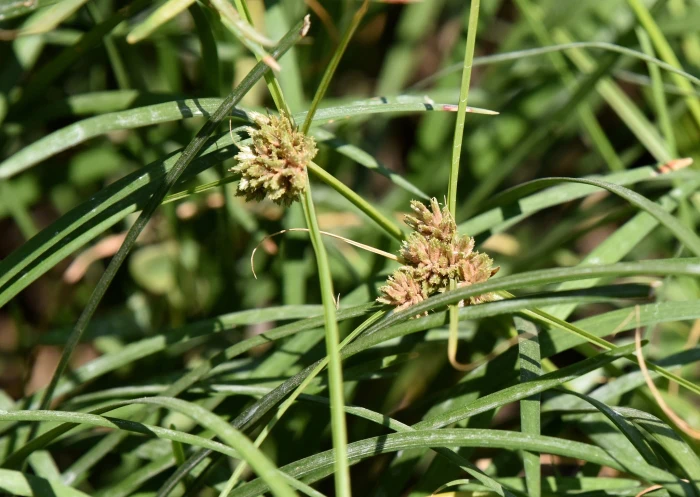Purple-Glume Flat Sedge
(Cyperus sanguinolentus)
Purple-Glume Flat Sedge (Cyperus sanguinolentus)
/
/

© Zinogre
CC BY-SA 4.0
Image By:
© Zinogre
Recorded By:
Copyright:
CC BY-SA 4.0
Copyright Notice:
Photo by: © Zinogre | License Type: CC BY-SA 4.0 | License URL: http://creativecommons.org/licenses/by-sa/4.0/ | Uploader: zinogre | Publisher: iNaturalist |

























Estimated Native Range
Climate Requirements for Spartanburg, South Carolina
| This Plant | Your Site | Plant Suitability for Your Location | ||
|---|---|---|---|---|
| • Precipitation | 2" - 178" | 51" | Aquatic | Aquatic |
| • High Temp. | 58°F - 111°F | 91°F | Your summer temperatures are normal for this plant. | Excellent |
| • Low Temp. | -25°F - 73°F | 30°F | Your winter temperatures are normal for this plant | Excellent |
This plant should grow well at your location with about N inches per year (Y minutes per month) of irrigation.
Summary
Cyperus sanguinolentus, commonly known as purple-glume flat sedge, is an erect perennial sedge that varies widely in size, typically growing from 2 to 31 inches tall. It is native to a variety of wetland habitats including marshes, wet grasslands, and the edges of water bodies in many parts of Africa, India, Asia, and Australasia. The species epithet ’sanguinolentus’ refers to the blood-red color of the seed, which is a distinguishing feature of this plant. The sedge forms dense clumps and has triangular stems with leaves arranged in ranks. The inflorescences are compound umbels with spikelets that have a reddish-purple glume, hence the common name.
Purple-glume flat sedge is valued for its ability to thrive in wet conditions and is often used in water gardens, rain gardens, and as a soil stabilizer along pond edges or in riparian plantings. It prefers full sun to part shade and requires consistently moist to wet soil. While it is not known for showy flowers, it can provide interesting texture and color contrast in the right settings. However, due to its potential invasiveness, it should be planted with caution and monitored to prevent unwanted spread. Gardeners should be aware that it can become a problem if it escapes cultivation and establishes in natural wetland areas.CC BY-SA 4.0
Purple-glume flat sedge is valued for its ability to thrive in wet conditions and is often used in water gardens, rain gardens, and as a soil stabilizer along pond edges or in riparian plantings. It prefers full sun to part shade and requires consistently moist to wet soil. While it is not known for showy flowers, it can provide interesting texture and color contrast in the right settings. However, due to its potential invasiveness, it should be planted with caution and monitored to prevent unwanted spread. Gardeners should be aware that it can become a problem if it escapes cultivation and establishes in natural wetland areas.CC BY-SA 4.0
Plant Description
- Plant Type: Grass
- Height: 0.5-1.5 feet
- Width: 0.5-1 feet
- Growth Rate: Moderate
- Flower Color: N/A
- Flowering Season: Summer, Fall
- Leaf Retention: Semi-deciduous
Growth Requirements
- Sun: Full Sun, Part Shade
- Water: High
- Drainage: Medium, Slow
Common Uses
Erosion Control, Low Maintenance, Water Garden
Natural Habitat
Native to marshes, wet grasslands, and edges of water bodies in Africa, India, Asia, and Australasia
Other Names
Common Names: Rusty Flat-sedge, Rusty Nutgrass
Scientific Names: Cyperus sanguinolentus, Cyperus albidus, Cyperus areolatus, Cyperus atratus, Cyperus concolor, Cyperus eragrostis, Cyperus eragrostis f. melanocephalus, Cyperus eragrostis subsp. cyrtostachys, Cyperus eragrostis var. cyrtostachys
GBIF Accepted Name: Cyperus sanguinolentus